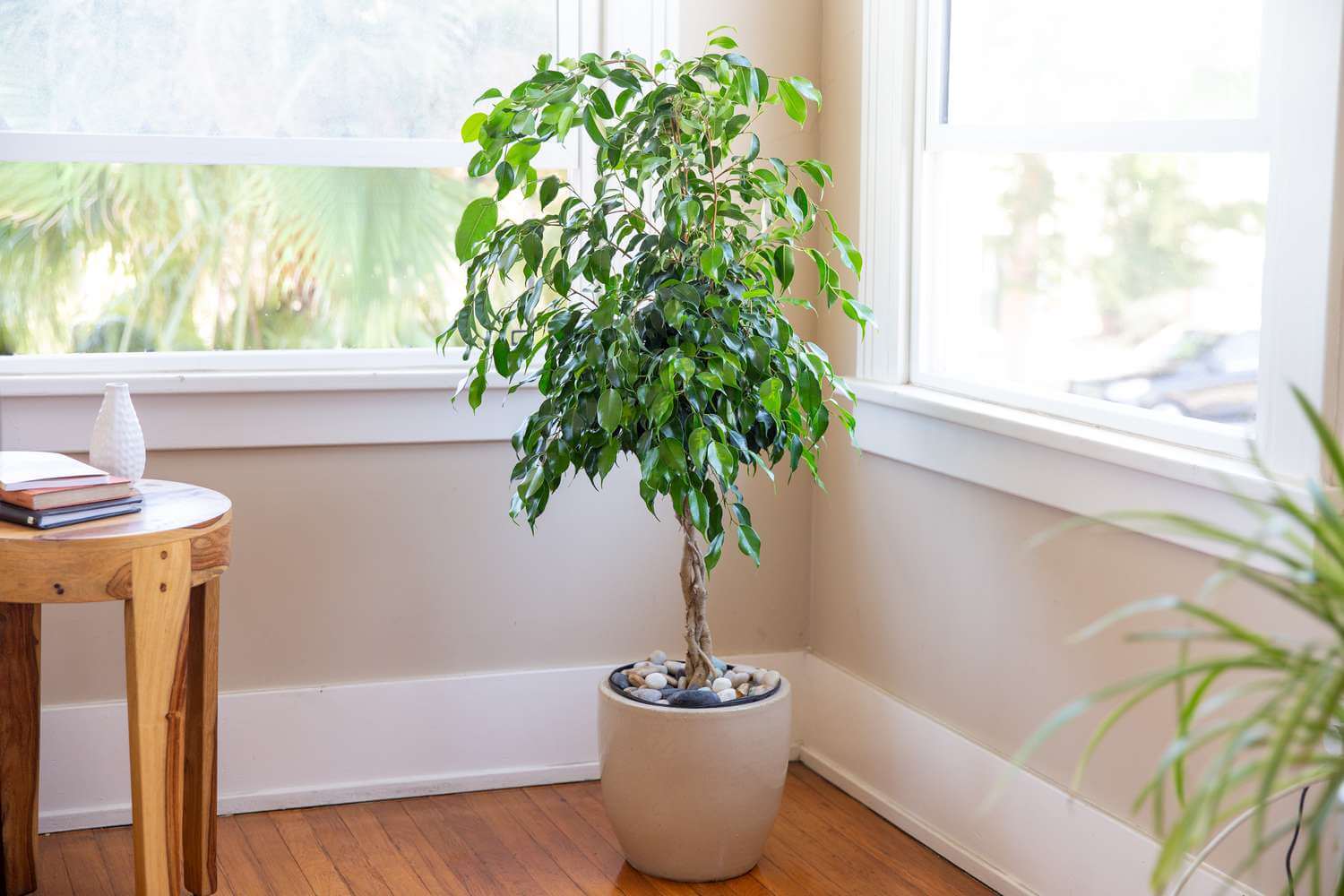
Weeping fig, commonly known as Ficus benjamina or simply the ficus tree, flourishes as a large broadleaf evergreen in tropical and subtropical climates. However, it’s more commonly found as a cherished houseplant in both residential and commercial indoor spaces.
Here, it thrives under filtered bright sunlight and well-draining potting soil, adding a touch of natural elegance to any interior setting. Known for its longevity, weeping figs can live anywhere between 20 to 50 years. It’s important to note, though, that while this plant enhances indoor aesthetics, it’s toxic to both humans and pets.
Ficus Benjamina Care
Light
Weeping figs crave bright, indirect sunlight, ideally with a touch of morning direct sun. While they prefer semi-shady conditions in their native habitat, indoor specimens require ample light to thrive. Once you’ve found the perfect spot, avoid relocating the plant, as weeping figs have a high intolerance for changes in lighting.
Soil
Any well-draining potting soil should suffice for your weeping fig. It doesn’t require soil rich in nutrients or organic matter. Opt for a soil-based mix containing perlite, sand, and vermiculite for enhanced drainage when repotting.
Water
Maintain consistent moisture levels for your weeping fig, ensuring the soil doesn’t become waterlogged, which can lead to leaf drop and root rot. Mimic its natural environment by adjusting watering frequency seasonally, keeping a keen eye on soil moisture.
Temperature and Humidity
Weeping figs thrive in temperatures ranging from 65 to 85 degrees Fahrenheit during the day and slightly cooler at night. Regulate temperature fluctuations indoors, avoiding drastic changes that may stress the plant. High humidity levels are ideal, so consider using a humidifier and misting the leaves regularly to create a favorable environment.
Fertilizer
As heavy feeders, weeping figs benefit from regular fertilization during the growing season. Begin with slow-release pellets at the onset of spring, followed by monthly fertilization in spring and summer, and bi-monthly during fall and winter. Supplement with magnesium and manganese if leaf drop persists despite optimal care.
Types of Weeping Figs
- F. benjamina: Known for its narrow, glossy green leaves, this variety grows into a small shrub or tree. Variegated cultivars include F. benjamina variegata and F. benjamina ‘Starlight’.
- F. elastica: The rubber tree boasts large, thick glossy leaves, with varieties like F. elastica robusta and F. elastica decora.
- F. lyrata: Recognized for its large, violin-shaped leaves, this variety adds a striking presence to any space.
Pruning
Regular pruning helps maintain the desired size and shape of your weeping fig. Conduct pruning during the plant’s dormant phase to minimize stress. Remove dead branches and leaves throughout the year to prevent disease spread, using sterilized pruning tools for optimal plant health.
Propagating Weeping Fig
Propagation via cuttings is relatively straightforward, particularly during the spring months. Select healthy cuttings with at least two sets of leaves, and root them in moistened peat moss. Maintain high humidity and bright, indirect light until roots develop, then transplant into individual pots.
Potting and Repotting
As fast growers, weeping figs may require annual repotting, especially in spring. Choose a potting method that aligns with the plant’s growth habit, whether standard, topiary, or bonsai. Move to a larger pot when necessary to accommodate root growth and maintain optimal plant health.
Overwintering
While weeping figs can enjoy outdoor summers, bring them indoors before the arrival of cold weather. Protect them from drafts and temperature fluctuations to prevent stress and maintain vitality.
Common Pests & Plant Diseases
Watch for signs of common pests such as aphids and scale, treating promptly to prevent damage. Weeping figs are also susceptible to bacterial diseases like crown gall, emphasizing the importance of proactive prevention measures.
Common Problems With Weeping Fig
Leaves Falling Off
Leaf drop may indicate various stressors, including repotting, improper watering, or environmental changes. Once the plant acclimates, leaf shedding should subside.
Leaves Turning Yellow
Yellowing leaves may signal root rot due to overwatering or poor drainage. Adjust watering practices and improve soil drainage to restore plant health.
Yes, weeping figs are low-maintenance, thriving in indoor environments with limited light.
Weeping figs can grow several feet annually, necessitating regular maintenance.
While similar, F. benjamina (weeping fig) boasts a more weeping growth habit compared to F. microcarpa (curtain fig), which grows more upright. Varieties such as columnar spires offer novel growth habits for added visual appeal.